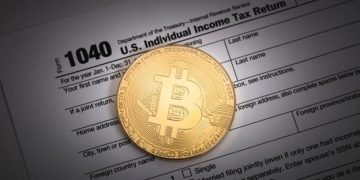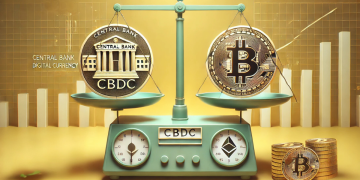Decentralized Finance (DeFi) has been one of the most transformative innovations to emerge from blockchain technology, and Ethereum has stood at the center of this revolution. By enabling developers to build decentralized applications (dApps) that remove intermediaries from financial services, Ethereum has created an open, permissionless financial system. But with this innovation has come regulatory scrutiny. Governments and institutions across the globe are grappling with how to oversee DeFi without stifling its potential.
The question is not whether regulation will come—it already has in some places and is accelerating worldwide—but how regulation will impact Ethereum’s DeFi ecosystem. Will compliance frameworks legitimize DeFi and accelerate institutional adoption? Or will they limit innovation and drive projects underground?
This article explores new compliance standards, the impact of regulation on Ethereum-based dApps, and case studies of how DeFi projects have navigated the changing regulatory landscape.
1. New Compliance Standards in the DeFi Space
Regulators worldwide are realizing that DeFi poses both opportunities and risks for financial markets. Unlike traditional finance, where institutions such as banks, brokers, and custodians act as compliance gatekeepers, DeFi operates through autonomous smart contracts. This decentralization creates a unique challenge: who is responsible for regulatory compliance?
1.1. AML and KYC in DeFi
- Anti-Money Laundering (AML) and Know Your Customer (KYC) are the cornerstones of financial regulation.
- Regulators argue that without these checks, DeFi can be exploited for illicit activity such as money laundering or terrorist financing.
- Emerging proposals suggest requiring front-end interfaces (such as DeFi web portals) to implement KYC while allowing the underlying protocols to remain decentralized.
1.2. The FATF Travel Rule
- The Financial Action Task Force (FATF) has applied its Travel Rule to crypto transactions, requiring originator and beneficiary information to accompany transfers above certain thresholds.
- For Ethereum-based DeFi, this creates practical questions: how do you attach identity information to autonomous smart contracts?
- Some projects are experimenting with on-chain identity solutions, such as soulbound tokens or decentralized identity (DID) systems.
1.3. SEC and Commodity Classification
- In the U.S., the SEC has suggested that many DeFi tokens may qualify as securities.
- Ethereum’s proof-of-stake transition has also attracted debate on whether staked ETH could fall under securities regulation.
- If tokens are classified as securities, many DeFi projects may be forced to register, dramatically changing their accessibility.
1.4. EU MiCA Framework
- The European Union’s Markets in Crypto-Assets (MiCA) regulation aims to create a harmonized regulatory regime.
- MiCA includes provisions for stablecoins, which form the backbone of much of Ethereum’s DeFi liquidity.
- Under MiCA, issuers of stablecoins must meet capital requirements and comply with stringent transparency standards, potentially reshaping DeFi liquidity pools.
2. dApp Growth Under Regulation
Ethereum’s dApp ecosystem thrives on open innovation, but regulation introduces both constraints and opportunities.
2.1. Institutional Adoption Potential
- Regulation provides legitimacy. Institutional investors who currently avoid DeFi due to compliance risks may enter once frameworks are clear.
- Regulated DeFi protocols could attract billions in institutional liquidity, particularly in lending, derivatives, and tokenized assets.
- Ethereum, as the most mature DeFi platform, stands to benefit disproportionately.
2.2. The Innovation vs. Compliance Trade-Off
- Compliance requirements may stifle experimentation, especially for smaller developers.
- DeFi thrives because anyone can launch a dApp without licensing—introducing barriers to entry could slow growth.
- Developers may migrate toward more regulatory-friendly blockchains if Ethereum becomes overly burdened by compliance expectations.
2.3. User Experience Changes
- Regulation may change how users interact with dApps:
- Wallets may need to integrate identity verification layers.
- Transaction limits or reporting requirements could apply.
- Privacy-preserving tools such as mixers may be restricted or banned.
- While these measures enhance safety, they may reduce the “permissionless” nature that drew users to DeFi in the first place.
2.4. Stablecoin Regulation and Its Ripple Effect
- DeFi liquidity pools such as those on Uniswap, Curve, and Aave rely heavily on stablecoins like USDC, USDT, and DAI.
- If regulators impose stricter controls on stablecoin issuers, the cost of liquidity provision could rise.
- Ethereum-based DeFi would then need to innovate alternative settlement assets, perhaps turning to algorithmic stablecoins or tokenized real-world assets.
3. Case Studies: DeFi Projects and Regulation
To understand how regulation might impact Ethereum’s DeFi ecosystem, it’s useful to look at how projects have already responded to regulatory pressures.
3.1. Uniswap: Navigating Decentralization and Regulation
- Uniswap Labs, the team behind Ethereum’s largest decentralized exchange, has already begun limiting access to certain tokens (such as synthetic assets that could be considered securities) on its front-end interface.
- The core smart contracts remain decentralized and permissionless, but the web app restricts user access to avoid legal exposure.
- This model—decentralized backend with regulated frontend—may become the industry norm.
3.2. MakerDAO and the Stablecoin Debate
- MakerDAO issues DAI, a decentralized stablecoin pegged to the U.S. dollar.
- In response to regulatory scrutiny, MakerDAO has debated shifting reserves toward U.S. Treasuries, effectively making DAI partially reliant on centralized assets.
- This hybrid approach highlights the tension between regulatory compliance and decentralization ideals.

3.3. Tornado Cash Sanctions
- In 2022, the U.S. Treasury’s OFAC sanctioned Tornado Cash, an Ethereum-based privacy mixer, for allegedly facilitating illicit transactions.
- While Tornado Cash’s smart contracts are immutable, front-end access and developer involvement were criminalized.
- The case raises critical questions: Can decentralized code be banned? And what liability do developers hold for how their dApps are used?
3.4. Aave and Institutional DeFi
- Lending protocol Aave has experimented with institutional-grade offerings such as Aave Arc, a permissioned liquidity pool where only KYC-verified participants can engage.
- This “walled garden” approach shows how Ethereum DeFi can adapt to serve both retail and institutional markets.
4. The Future Outlook: Balancing Regulation and Innovation
The trajectory of Ethereum’s DeFi ecosystem under regulation will depend on striking a delicate balance between innovation and compliance.
4.1. Potential Benefits of Regulation
- Legitimacy and Trust: Regulation could reduce the stigma of DeFi as a “wild west” market.
- Increased Liquidity: Institutional capital may flow into regulated protocols.
- Consumer Protection: Users would benefit from safeguards against scams, rug pulls, and systemic risks.
4.2. Potential Risks of Over-Regulation
- Innovation Flight: Developers may move to less restrictive jurisdictions or blockchains.
- Loss of Privacy: Strict KYC/AML requirements may undermine the ethos of decentralization.
- Centralization Drift: To comply, many protocols may adopt centralized governance structures, weakening Ethereum’s decentralized narrative.
4.3. The Middle Path: Hybrid Models
- The most likely outcome is a hybrid regulatory model:
- Permissionless smart contracts continue to operate in the background.
- Interfaces, custodians, and liquidity providers comply with regulation.
- This model ensures regulatory oversight without destroying DeFi’s core architecture.
Conclusion: The Crossroads of DeFi and Regulation
Ethereum’s DeFi ecosystem is at a crossroads. The same qualities that make it revolutionary—openness, decentralization, borderless access—are precisely what regulators see as risky. The regulatory wave is inevitable, but its form will determine whether DeFi becomes a mainstream financial infrastructure or remains a niche alternative.
- If regulators strike a balance, Ethereum could evolve into a regulated global financial layer, hosting institutional-grade dApps with trillions in liquidity.
- If regulation is overly restrictive, innovation could shift elsewhere, pushing Ethereum developers into less compliant territories.
Ultimately, the future of DeFi on Ethereum depends on collaboration—between regulators seeking safeguards, developers designing compliant yet decentralized solutions, and users demanding both freedom and security.
As the industry matures, Ethereum may prove that regulation and decentralization can coexist, creating not just a new financial system, but a more inclusive and transparent one.































